Articles Tagged “occupy wall street”
-
Event: You Are Not A Loan, a Benefit for Strike Debt Bay Area
Occupy Wall Street has moved out of the streets and into the spreadsheets by launching a “Bailout of the People by the People” campaign, a campaign aimed at buying and forgiving consumer debt.
-
Reports of Occupy’s Demise Greatly Exaggerated
It should be no surprise that the mainstream media is eager to report on Occupy’s supposed demise. Even ignoring the fact that the corporate-owned media has a strong desire to never see social movements such as Occupy succeed, the media, as a rule, generally needs to put a dramatic narrative to everything it reports. To them, every story ought to have a captivating story arch with a beginning, middle, and an end.
-
Groups Kick Off 99% Spring Training Sessions
Others believe Occupy is an all-encompassing movement and must include all voices (except the 1 percent and non-breathing corporations of course); that labor has the resources and the organizational expertise to achieve realistic goals.
-
Religious Leaders Show Faith in Occupy Movement
The OWS movement, which protests social and economic inequity and predatory practices that benefit the wealthiest 1 percent at the expense of the rest of society, was kicked off by the Canadian group Adbusters and began in September in the heart of New York City’s financial district. Since then, the movement has been adopted and localized in cities across the nation, some focused on specific issues.
-
Richmond Mayor Welcomes Occupy, Education Marchers
Richmond Mayor Gayle McLaughlin made a morning visit to St. Mark’s Church, the first overnight stop in the four-day Occupy Education march from the Bay Area to Sacramento. The group plans to reach UC Davis Sunday and board busses to join large demonstrations at the capitol Monday. About 100 people signed up for the march, with some joining at stops along the way, according to march organizers.
-
Occupy Groups Converge on San Quentin
in Support of Prisoners, Protest Prison ConditionsSpeakers, including some who have been incarcerated, talked about reform of the California’s three-strikes sentencing law, the mental punishment of solitary confinement and support for prisoners undertaking hunger strikes to protest conditions inside prisons. They included members of the San Quentin Six, prisoners who faced charges after the 1971 shootings that killed Black Panther George Jackson along with guards and other prisoners. Shane Bauer, one of the three Americans captured in Iran in 2009, talked about the hunger strikes and denial of family letters in his time there.
-
No Surrender: Occupy DC Protesters
Return to McPherson SquareAuthorities cleared out what had been a sea of tents and blue tarps located just a few blocks from the White House. A muddy vacant lot was about all that remained in most sections of the square as protesters mingled on the sidewalks with gawkers and news reporters.
Occupiers spent part of the day scouting for emergency shelter to accommodate those evicted from the public park. McPherson Square had served as a gathering spot for protesters from around the country, many of whom already had been chased away from protest camps in their hometowns.


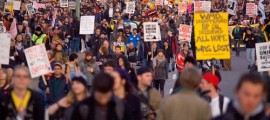
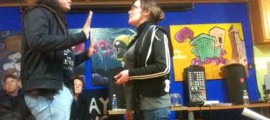
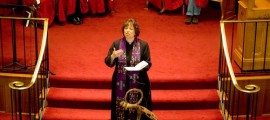
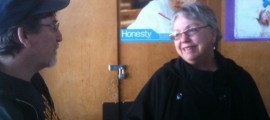
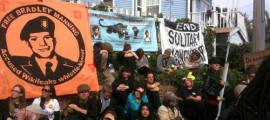
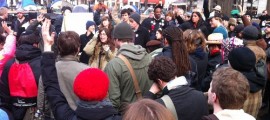

 The Hunger Site
The Hunger Site
Recent Comments